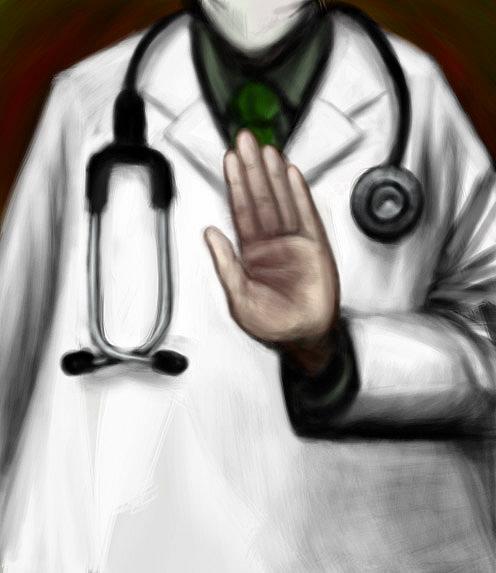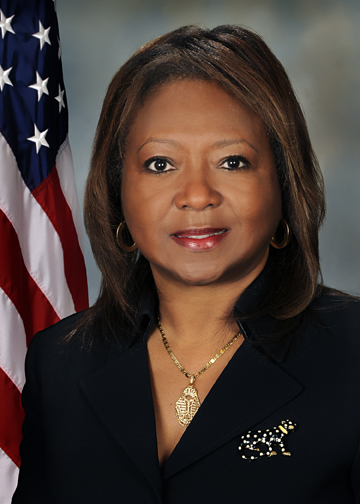Q&A with Mary Flowers: Looking for New Ways to Improve Patient Safety

 When the Supreme Court of Illinois struck down the state's cap on malpractice lawsuit payments, plaintiffs' attorneys cheered. Their clients, however, had much to lament.
When the Supreme Court of Illinois struck down the state's cap on malpractice lawsuit payments, plaintiffs' attorneys cheered. Their clients, however, had much to lament.
When the cap had been pushed through the state legislature, state Rep. Mary Flowers had found a way to include with it a version of her Patient Right-to-Know Act. That act created an online state database that allowed patients to see physician disciplinary histories, practice specialties, insurance information, hospital affiliations and a list of any malpractice judgments against physicians or malpractice settlements made by the physician in the previous five years.
Because the amendments to the malpractice cap were deemed part and parcel of the now unconstitutional law, the court ruling prompted the state Department of Financial and Professional Regulation to remove the database entirely. The ruling also took away one of the department's best investigatory tools: the authority to investigate 10 years of a doctor's medical records. And it abolished the state's fledgling "Sorry Works" program, which made apologies for medical mistakes inadmissible as evidence in malpractice cases.
Antidote spoke with Flowers about her success in reviving the Right-to-Know language this summer. The first part of our interview ran on Wednesday. The state is in the process of recreating the database. The other patient safety provisions remain unaddressed. We talked about that and more in the second part of our interview below, which has been edited for space and clarity.
Q: When the Medical Society of Illinois approached you about another compromise to your Right-to-Know legislation, who specifically came to you?
A: It was their main lobbyist, who said, ‘We agree with you. Here is our bill. This is what we want. Put an expiration date on the state's medical practice law.' And I said, "This is what I want. I don't want to have to bend any parts of my bill to get it through.'
Q: Some of the original compromises you had to make are still in the law, though. For example, the medical malpractice histories only go back five years.
A: That's right. It's five years. And the doctors still have the opportunity to review and have the final say to make sure that everything is correct. Doctors can face penalties if they lie, and since the bill was enacted into law, all the doctors did comply. We didn't find anything terribly wrong or that the doctors had been being dishonest.
Q: Even though the Physician Profile page was popular, receiving 100,000 to 150,000 hits per week, the state's Department of Financial & Professional Regulation did not seem to be working to restore it after the court ruling. Did you work with the agency on your bill?
A: I did work with them. I thought they were just stalling for time, but there was a law on the books, which I did not know about, that the information about doctors could not be disseminated without authority from the legislature. There was something in the existing law that protected the doctors from disseminating that information. It was considered a violation of their right to privacy.
Q: How was the agency to work with?
A: They were much more accommodating this time. I think they saw the handwriting on the wall.
Q: One of the most useful parts of your original bill was the ability for the agency to go back and look at 10 years of a physician's activities, instead of just five years. I asked the agency if this "pattern of practice" extension had been revived by you or anyone else. They said it had not. Do you have any plans to bring that back?
A: I thought the five years was how far you could go back to report their malpractice cases. But there's nothing stopping the department from going back further to look at their pattern of practice.
Q: When I first contacted the agency last year about your bill and the court ruling, they said that one of the things they lost with that ruling was the ability to look at a 10-year pattern of practice.
A: I'd have to go back and review that. I thought that everything that was in the old bill was in the new bill. The reason I was so focused on those five years of reporting was because that was a compromise for the initial bill. I was not aware that the 10-year pattern of practice was stricken.
Q: I imagine that you'd like the agency to go back as far as it can for both the reporting and the pattern of practice?
A: I still don't understand what is stopping them from going back and looking at the pattern of practice.
Q: In the bill that passed in 2005, the pattern of practice provision was expanded from five years to 10 years. When the court got rid of the malpractice cap, that pattern of practice went with it, at least that's what the agency told me.
A: I'm going to have to go back and take a look at that. They shouldn't worry. If it was stricken, it will be put back in.
Q: Did you have more support for your bill this time?
A: Everything went through much more smoothly this time, and part of that is because of what was going on with doctors and their sexual transgressions. After Meghan Twohey reported on how the state wasn't doing anything about these doctors who sexually abuse their patients, (Illinois state representative) Jack Franks really jumped on the idea. So he had a lot of support for his bill to make it harder for these doctors to have their licenses reinstated, and I had a lot of support for mine. I give that credit to Megan Twohey because her articles pushed them to be on board. Without her reporting, it would have been a lot tougher fight.
Q: It didn't seem like there was much of a fight at all this time. Was there even any debate over your bill? Did you call any patients to testify?
A: This time there was not very much debate. I did not have any patients come forward. At the press conference after the bill was passed, I mentioned the patients. I can remember their faces, but I can't remember all their names. I can remember their issues.
Q: Have you received any calls or emails from any of the patients who testified in the past?
A: I haven't heard from any of them. I'm not even sure that they know this law has been made because of their efforts.
Q: What happened to the Sorry Works program?
A: I will revitalize the Sorry Works program, but that's not going to be as easy. Now I have to take on the trial lawyers. They want to make sure that by doing this we're not giving any favors to the doctors for their transgressions. They are supposed to be working on some kind of language to propose. They seem to think that if the doctors said they were sorry there would be no reason to go to court. The doctor could just make an apology and settle with the patient. They don't want that.
Q: But Sorry Works is just a small piece of the malpractice issue, right? It simply says that the actual apology can't be brought into court as evidence.
A: That's how it is supposed to work. I read a story online the other day about woman who went to the doctor, and the doctor told her to take a prescription and go home. The next day she was dead, and the doctor felt bad. He told the family sorry, and he went to the funeral. He told the family that it was his mistake and he had listened to their mother she would still be alive today. He made an undisclosed settlement and there were no lawyers involved. So I can see this could present a problem for their bottom line.
Q: Are there any other big patient safety issues you are hoping to take on?
A: The health care insurance exchanges. I've been dealing with legislation on that. There are quite a few things out there that I'm going to try to work on. I don't like the fact that the HMOs are still able to dump patients, especially disabled patients. The states have been trying to save money by allowing the HMOs to take on the disabled patients. The HMOs knew they couldn't handle it, and now they want to dump the elderly and disabled. To me, that's a criminal act.
Related Posts:
Q&A with Mary Flowers: Reviving the Fight for Patients' Rights
Q&A with Mary Flowers, Part 1: Bringing medical mistakes out of the shadows
Q&A with Mary Flowers Part 2: Adding "sorry" to the medical lexicon
Chicago's Buried Bodies, Part 1: Illinois regulators make backgrounding doctors near-impossible
Chicago's Buried Bodies, Part 2: Millions in malpractice judgments amount to nothing in Illinois
Chicago's Buried Bodies, Part 3: The doctor discipline ball bounces to the legislative court
Photo credit: Truthout.org via Flickr

